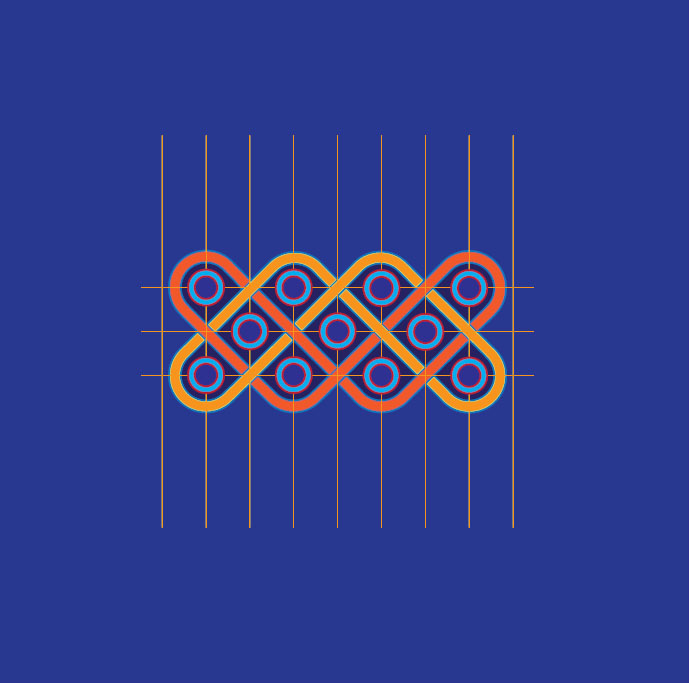Eleven
There is a parody about a mathematician who tries to prove that all numbers (here meaning positive integers) are interesting. Assume not. The number 1 is certainly interesting, being the generator of all numbers. So is 2, the first even integer and the only even prime. Three, being the sum of 1 and 2, makes it interesting as well. What about 4? We have 4 = 2 + 2 = 2 × 2 = 22: no doubt about it, 4 is definitely interesting. And so it goes, until we arrive at the first uninteresting number. But this, of course, makes it interesting! Thus, all numbers are interesting—QED.
If we had to choose an uninteresting number, 11 would certainly be a candidate. Tucked unceremoniously between its two more famous neighbors, 10 and 12, it seems to lack any defining characteristics: it is not a member of any immediately recognizable number sequence,1 nor is it a perfect square or a sum of two squares. In mythology, too, 11 seems to have acquired a negative reputation: in ancient Rome, an assembly of 11 men was charged with apprehending criminals and bringing them to justice—a precursor of our modern jury system. The sixteenth-century numerologist Petrus Bungus deemed 11 as having “no connection to divine things, no ladder reaching up to things above, nor any merit.”2 Even nature seems to shun 11: flowers with 2, 3, 4, 5 and 6 petals are very common, but not with 11. Nor does it play a role in the inorganic world of crystals and minerals. In Peter Stevens’s exhaustive Handbook of Regular Patterns (see the bibliography), with its hundreds of designs taken from all aspects of art and nature, not a single pattern is based on 11.
Still, the excluded number has its advocates: as told in Genesis 37:9, 11 stars appear in Joseph’s dream, together with the Sun and Moon—perhaps a reference to the 11 constellations of the zodiac visible on any given night, the twelfth being hidden by the Sun. The Susan B. Anthony dollar coin, still in circulation but rarely used, is framed by an 11-sided regular polygon (figure 17.1). And of course, 11 is the number of players in a football team—American football as well as soccer.
Eleven does have some mathematical claim to fame: it is the second repunit—a number, all of whose digits are 1. These numbers are denoted by Rn, where n is the number of 1s. So R1 = 1 = (10 − 1)/9, R2 = 11 = (100 − 1)/9, and, in general, Rn = (10n − 1)/9. These repunits have some remarkable properties: not only are all repunits palindromes (numbers that are the same whether read forward or backward), but so are their squares, up to R9:

Eleven is one of a small number of primes that have simple divisibility rules. Take the number 1,529 and alternately add and subtract its digits, going from left to right: 1 − 5 + 2 − 9 = −11. Since the result is divisible by 11, so is the number itself (indeed, 1,529 = 11 × 139). You can check this for as many numbers as you wish: it always works.3 Repunits in general follow some simple divisibility rules: No repunit is divisible by 2 or 5; it is divisible by 3 if and only if n is a multiple of 3; by 7 and by 13 if and only if n is a multiple of 6; and by 11 if and only if n is even. Among composite repunits, R38 has a particularly interesting prime factorization: 11 × 909,090,909,090,909,091 × 1,111,111,111,111,111,111, of which the first and third factors are themselves repunits, R2 and R19, while the second factor, except for the trailing 1, has a similar digit structure as that of ![]() .
.
As with Mersenne numbers (see page 42), Rn can be prime only if n is prime, but the converse is false: R3 = 111 = 3 × 37. As of this writing, only five prime repunits are known: R2, R19, R23, R317, and R1031, the last discovered in 1986 by Hugh C. Williams and Harvey Dubner. In addition, there are several “probable primes” whose primality has still to be confirmed. And like the Mersenne primes, it is unknown how many repunit primes exist—or even if their number is finite or infinite.4
Our illustration (plate 17) shows an intriguing lace pattern winding its way around 11 dots arranged in three rows; it is based on an old Celtic motif. We hope this excursion into an “unpopular” number will encourage the reader to search for it in other places and be rewarded with discovering the unexpected.5
NOTES:
1. It is, however, the fifth member of the Lucas numbers—a Fibonacci-like sequence (see chapter 20) that starts with 1 and 3: 1, 3, 4, 7, 11, 18, 29, g….
2. Annemarie Schimmel. The Mystery of Numbers (New York: Oxford University Press, 1993), p. 189.
3. Sometimes the result may be 0, as, for example, with 187. Since 0 is divisible by 11 (0 = 11 × 0), so is 187; indeed, 187 = 11 × 17.
4. Source: Wolfram MathWorld, on the Web at http://mathworld.wolfram.com/Repunit.html, 2013.
5. This chapter is based on an article by Maor in the journal Mathematics Teaching in the Middle School (January 2002).


